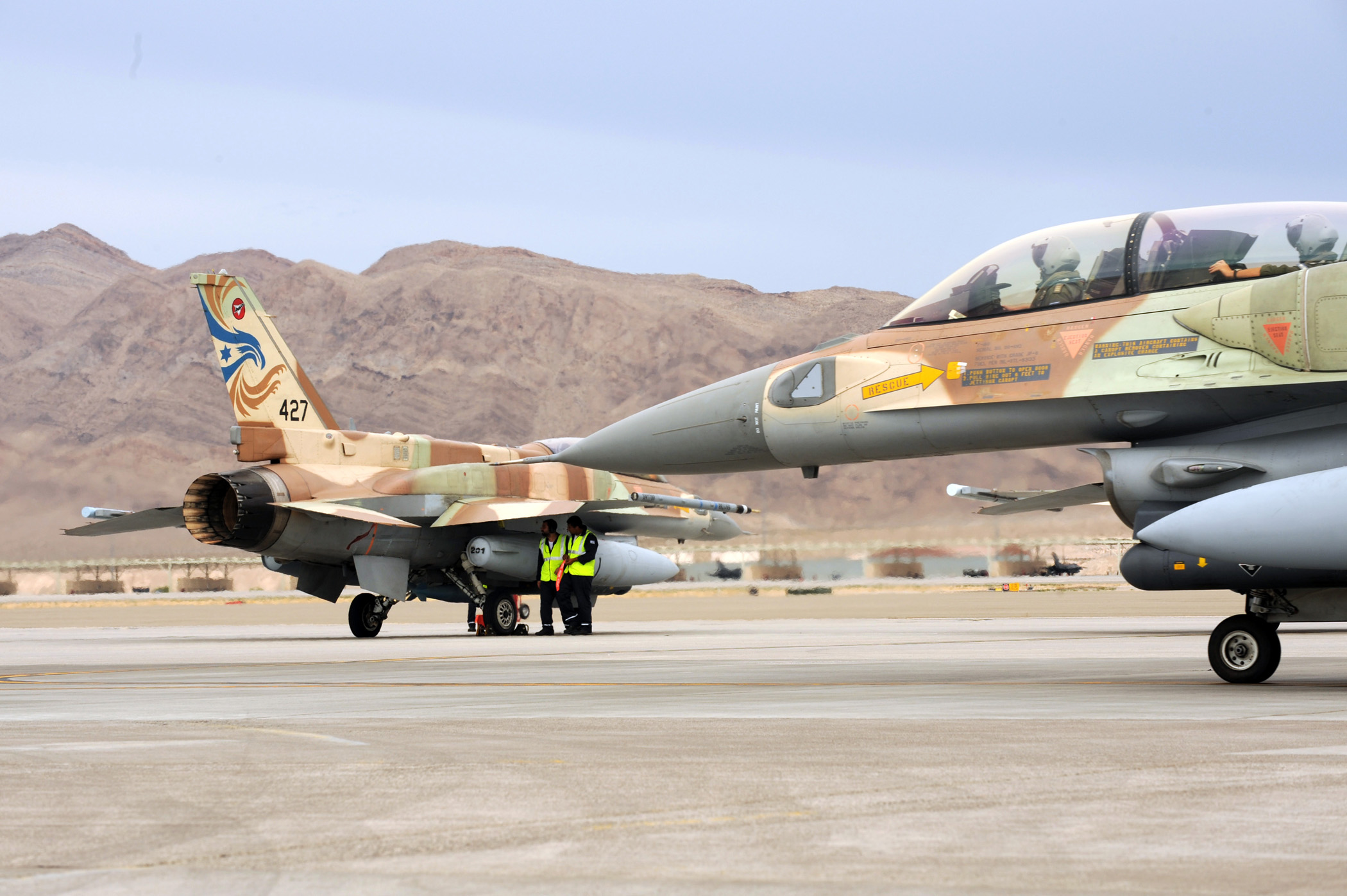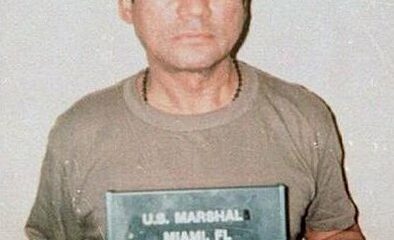Civilization
The Wider Middle East War That Only Hamas Wants
HAMAS started its war with Israel hoping to drag Hezbollah and Iran into it as it wore on. Such a war could be inevitable.

The Middle East teeters on the brink of a ruinous all-out regional war. Yet Israel did not want a wider and high-intensity war. Iran-backed Hezbollah does not appear to have wanted a wider and high-intensity war. And Iran, too, appeared not to have wanted a wider and high-intensity war. Only Iran-backed Hamas wanted a full-blown regional war. It may well get its way.
HAMAS started the war hoping to widen it
In defending itself against the Iranian-built “ring of fire” – Hamas in Gaza and the West Bank, Hezbollah in Lebanon, Houthis in Yemen, and militias in Syria and Iraq – intended to wear it down and cause its collapse, Israel advances American interests in regional stability and in fortifying an international order that favors freedom and democracy. American support for Israel, in the military arena as well as in the court of international public opinion, has been and will remain crucial.
Committed by its charter to Israel’s destruction, Hamas launched a savage attack on southern Israel on Oct. 7, 2023, targeting mostly civilians and killing more than 1200, at least 32 of whom were Americans, and kidnapping more than 250, at least 10 of whom were Americans. Igniting a multi-front war belonged to “the contours of Hamas’s broader plan,” according to a November 2023 Washington Post assessment. Hamas’ aim was “not just to kill and capture Israelis, but to spark a conflagration that would sweep the region and lead to a wider conflict.” In a meeting convened by the New York Times with Hamas representatives in Qatar that also took place in November, Taher El-Nounou, a Hamas media adviser, said, “I hope that the state of war with Israel will become permanent on all the borders, and that the Arab world will stand with us.”
Necessary sacrifices
Yahya Sinwar, recently named head of Hamas’ political bureau to replace Ismael Haniyeh who was killed in Tehran last week, recognized that Gaza Palestinians would pay a high price for Hamas’ success. In June 2024, the Wall Street Journal reported that the mastermind of the Oct. 7 attacks affirmed in emails to Hamas negotiators that the thousands of civilian deaths in Gaza involved “necessary sacrifices” for the sake of Israel’s annihilation.
Writing to Hamas officials negotiating a cease-fire agreement, Sinwar also stated, “We have the Israelis right where we want them.”
That meant bogged down fighting Hamas militants dressed as civilians in and under Gaza’s cities. Sinwar also meant that the international media was playing its anticipated role by portraying Israel as responsible for the humanitarian disaster in Gaza. Civilian suffering in Gaza on a mass scale was a foreseeable – and intended – consequence of Hamas’ slaughter of Israeli civilians on Oct. 7 and of the jihadists’ determination, decades in the making, to unlawfully and inhumanely embed Hamas military forces in Gaza’s civilian areas, not least homes, schools, hospitals, and mosques. Sinwar may not have anticipated the resource, tenacity, and valor with which Israel would exercise its right to destroy Hamas’ capacity to wage war and govern, and to secure the hostages.
Israel scores hits
Over the last month, Israel has inflicted several major blows on Iran’s “ring of fire.” On July 13, the Israel Defense Forces killed Hamas military chief Mohammed Deif, who had been hiding in in Khan Younis in a compound located in a designated humanitarian zone. On July 20 – following months of Iran-backed Houthi efforts to strike Israel from Yemen and in direct response to a Houthi drone that hit a Tel Aviv building killing a man – IDF aircraft flew more than a thousand miles to destroy fuel-storage facilities at the Houthi-controlled Hodeida port in western Yemen.
On July 30, in retaliation for the Hezbollah rocket that killed 12 children playing soccer in the Golan Heights and wounded dozens more, an IDF airstrike killed top Hezbollah military commander Fuad Shukr in an apartment building in southern Beirut. And on July 31, Hamas political leader Ismail Haniyeh was killed at a state-run guesthouse in Tehran – on one account by a remotely activated bomb and on another by a short-range projectile. Although widely believed to have executed the mission, Israel has not claimed responsibility for Haniyeh’s death.
Marvels of intelligence gathering and analysis, patient planning, and pinpoint execution, these acts of self-defense against enemies devoted to its destruction came at a high cost to Israel. In particular, the killing of Hezbollah’s Shukr in Beirut and of Hamas’ Haniyeh in Tehran humiliated their hosts and made likely retaliatory strikes from Hezbollah and Iran that could plunge the region into a full-blown war.
Hezbollah a more formidable foe
In “Israel’s Next War,” which appeared in late July online at Foreign Affairs, Amos Harel explains the foremost danger. The defense analyst for the Israeli newspaper Haaretz, Harel focuses on Hezbollah, which represents a substantially more formidable foe than Hamas and a closer and more menacing threat than Iran.
“Although Israeli air defense systems have been extremely successful thus far against missile attacks from Gaza, Lebanon, Iran, and Yemen, a total war with Hezbollah would be a whole different ballgame,” Harel writes. “According to Israeli intelligence estimates, Hezbollah’s weapons stockpile is more than seven times as large as Hamas’s and includes far more lethal weapons.” The arsenal contains “hundreds of attack drones, it includes some 130,000-150,000 rockets and missiles, including hundreds of ballistic missiles that could reach targets in Tel Aviv and even farther south – indeed, every point in the country.”
Despite the many and varied wars its neighbors have compelled it to fight since its birth in 1948, Israel has never faced a remotely similar threat. “Israel’s home-front command estimates that if a full-scale conflict broke out now, Hezbollah would launch some 3,000 rockets and missiles every day of the war, threatening to overwhelm Israel’s missile defenses,” according to Harel. “Israel would have to concentrate on defending crucial infrastructure and military bases, tell the civilian population to stay in bomb shelters, and hope for the best.”
HAMAS took even Hezbollah by surprise
Had Hezbollah also not been taken by surprise on Oct. 7, and had it not hesitated, its fighters could well have overrun northern Israel while the nation was still reeling from Hamas’ rampage through southern border communities. However, the IDF quickly moved tens of thousands of soldiers to the northern front, which stymied any Hezbollah ground assault.
At the same time, daily Hezbollah drone and rocket attacks since Oct. 8 and the lingering peril of cross-border incursions compelled Israel to evacuate tens of thousands of civilians from a three-mile swath of territory on the nation’s border with Lebanon. More than ten months later, those civilians remain displaced persons within their own country while Hezbollah’s persistent aerial assaults on the north have inflicted severe damage on Israeli infrastructure and ignited numerous forest fires.
While caught off guard by Hamas on Oct. 7, “Israel has long been preparing for a war with Hezbollah,” Harel reports. Nevertheless, Israeli Prime Minister Benjamin Netanyahu rejected a plan swiftly put forward by military leaders for “a major operation against Hezbollah that apparently would include the assassination of senior Hezbollah leaders.” Netanyahu had good reasons for exercising restraint. The Biden administration was opposed. Also, “he doubted whether the army was up to the task of fighting vicious wars on multiple fronts, just days after Hamas’s massacre of Israelis,” argues Harel.
Israel did fight back
Not that Israel declined to fight back. Since Oct. 8, the IDF has, in addition to the recent elimination of Shukr, killed a senior Hamas leader in Beirut, several senior Hezbollah commanders, and at least 370 Hezbollah fighters. It has also regularly destroyed weapons convoys and depots, and rocket launchers.
U.S. special envoy Amos Hochstein has little prospect of securing a negotiated settlement. Israel insists that Hezbollah forces remain north of the Litani River in southern Lebanon – about seven to 20 miles from the border as the waterway wends from east to west – in accordance with the August 2006 cease-fire agreement formalized in U.N. Security Council Resolution 1701. Hezbollah wants to return to the illegal positions it occupied before Oct. 7 south of the Litani and close to the border.
Consequently, the Israeli military establishment generally believes that a showdown with Hezbollah is inevitable. Israel’s preparations must consider the circumstances and the timing. Two major factors are the strains from 10 months of fighting Hamas and Hezbollah on IDF troops – regular and reserve – and the shortages of equipment, including key munitions. In the event of a major war, the IDF will probably rely on intensive airstrikes along with a ground incursion to the Litani. The airstrikes “could bring massive destruction to all state-owned civilian infrastructure in Lebanon within a few days,” states Harel.
American interests
At the same time, Hezbollah – perhaps also Iran and the Houthis – will rain down unprecedented waves of rockets and missiles on Israeli cities. Since Hezbollah, in blatant disregard of the international laws of war, places arsenals and launchers among civilian populations, Israeli operations to destroy those legitimate military targets will likely, though not intentionally, cause the deaths of thousands of Lebanese. Harel warns that Israel will be portrayed by “many Western countries and in the international media” not as Ukraine fighting in self-defense but “as another Russia, almost a pariah state.”
In the event of the full-blown regional war that Hamas sought to ignite on Oct. 7, Israel’s effective exercise of its right of self-defense would depend in part on U.S. intelligence sharing, supplies, and anti-missile operations. The Biden administration will also need to explain to a generally hostile and poorly informed world – not least many Western countries and the international media – that Israel’s determined exercise of its right to self-defense advances America’s interest in a stable Middle East that favors freedom and democracy.
This article was originally published by RealClearPolitics and made available via RealClearWire.
Peter Berkowitz is the Tad and Dianne Taube senior fellow at the Hoover Institution, Stanford University. From 2019 to 2021, he served as director of the Policy Planning Staff at the U.S. State Department.
-

 Executive2 days ago
Executive2 days agoWaste of the Day: Can You Hear Me Now? No.
-

 Civilization2 days ago
Civilization2 days agoTrump’s version of the Monroe Doctrine
-

 Civilization3 days ago
Civilization3 days agoOne Fell Swoop: Lawsuit Eyes Death Blow to Racial Preferences
-

 Civilization2 days ago
Civilization2 days agoTrump’s New Doctrine of Precision Deterrence
-

 Civilization1 day ago
Civilization1 day agoThe Mission to Extradite Nicholas Maduro
-

 Civilization1 day ago
Civilization1 day agoThe Snatch and Grab of Maduro Was Not ‘Illegal’
-

 Executive4 days ago
Executive4 days agoWaste of the Day: $1.6T in Wasteful Spending in Rand Paul’s “Festivus” Report
-

 Guest Columns4 days ago
Guest Columns4 days agoAdvice to Democrats Regarding Maduro Arrest: Resist Reflexive Opposition






